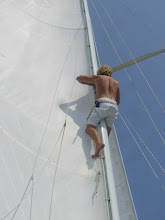Geologic evidence indicates that the first human inhabitants of the Arctic were originally from northern Russia. Two separate finds place humans in the valley of the Yana River in northern Russia as well as in northwestern North America by 28,000 B.C.E. Stone tools dated to 15,000 B.C.E. have also been recovered from a settlement near the Bluefish River in the northern Yukon. In addition, excavation of ivory tools along the Berelekh River in Russia points to unrelated inhabitation around 10,000 B.C.E. There is widespread evidence that by 6,000 B.C.E. homo sapiens had moved into the fringes of the Arctic region for good. What little we know about these early Arctic peoples, however, is based solely on archaeological evidence and oral tradition.
During the second half of the nineteenth century, some European historians claimed that the Inuit people are direct descendants of Ice Age European reindeer hunters. However, more recent archaeological surveys show that the Thule, ancestors of the Canadian and Greenlandic Inuit, moved into the coast of Alaska and eastern Siberia from northern Russia between 2000 and 3000 years ago. This evidence dispels the theory that the Inuit are in any way related to Ice Age Europeans. Furthermore, it indicates that the Inuit are relatively recent migrants to the Arctic.
The Inuit economy, based on the hunting of seals and whales, developed as the most northerly of North Pacific Rim maritime economies that stretched from Japan to British Columbia. It is distinct from the economy that developed during two major tribal occupations, dated between 2500 and 2000 B.C.E. and nearly 2000 years later (around 500 B.C.E.) in northern Greenland. Unlike the northern Canadian Inuit, these people appear to have relied primarily on the muskox that entered the Arctic region around between 3000 and 2000 B.C.E. However, the abrupt disappearance of these two cultures, referred to as Independence I and Independence II, likely indicates that the animal resources in the region were too meager to support long-term human populations.
How did the migration from the shores of present-day Siberia to Alaska, the Canadian north and Greenland occur? Hundreds of small tribes broke off to form their own communities, often ranging long distances in their search for food. At first, these early Arctic inhabitants spent only summer in Alaska before returning to Siberia. Tales of good hunting, though, would draw more people to the region the following year. Eventually, some of these people would have begun to follow the caribou eastwards during the caribou herd's wintertime migration. In search of a better life, they braved cold winters and long journeys. When a community was lucky enough to make a sufficiently large kill, archaeological finds indicate that they would establish winter camp in the area with small houses partially dug into the ground.
These settlers eventually reached the Mackenzie Delta in northern Canada. Here, mountains gave way to the wide plains of the Western Arctic. Hunting might well have been easier as the landscape converged at the riverhead. New animals – muskox, bison and possibly even mammoths – were discovered and eventually the settlers developed techniques to hunt them. As these early inhabitants moved further east, following the Mackenzie River towards Great Slave Lake, the hunters identified major river crossings and laid in wait for caribou herds to arrive.
At some point, small groups followed the animal life still farther east, reaching the islands that connect Greenland to Canada. Here, in areas such as Labrador, they found lush vegetation and ample populations of muskoxen, by now a staple of their diet, and caribou. At some point, an event such as sickness, social problems or heavy ice on the islands surrounding Lancaster Sound pushed some groups to head still further eastward. The journey from Siberia, which had brought these peoples' ancestors around nearly half the world and through 150 degrees of latitude, reached its Eastern stopping point in Greenland. On this vast island's northern coast, the ill-fated Independence cultures formed and later died off. Further south, the Saqqaq culture thrived, living off of sea mammals and caribou herds. These people had completed the last major exploration of lands previously unknown to the human species. In isolation, they developed their own customs, traditions and way of life. Indeed, it would be millenia before Europe established contact with these early Arctic tribes.




No comments:
Post a Comment